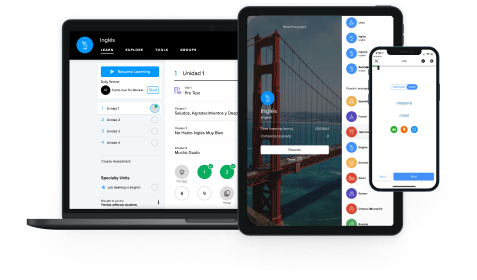
Your Cheat Sheet to Speaking Spanish like a Pro in Three Different Countries
Just when you think you’ve mastered a language, you travel to a country where the dialect varies slightly from what you learned — and suddenly it feels like you’re back at square one. Sound familiar? Spanish is a perfect example. It’s the second most widely spoken language in the world after Mandarin Chinese, so it’s no surprise that it’s one of our most popular courses. With this universal prevalence, however, there’s bound to be variations unique to specific regions.
Before we go any further, remember that no matter which type of Spanish you study, Spanish speakers around the world will be able to understand you. It might help to think of how a British or an Australian accent sounds to someone from the United States: there may be a few words you aren’t familiar with, but overall you know what the person is saying. With that said, it’s important to understand the characteristics of different variations if you want to sound like a true native speaker. We’ve got you covered.

Spanish in Spain (specifically in the capital, Madrid) is commonly considered to be the most “proper” form of the language. This is partly because it’s home to the Real Academia Española, a well-recognized institution that regulates the Spanish dictionary. Castellano(Castilian) is by far the most popular type of Spanish in the country, spoken in northern and central Spain, while more distinct dialects such as Catalan and Andalusian can be found as well.
Español in Spain is characterized by its use of the term vosotros, a second person pronoun meaning “you all.” If you studied Spanish in high school or college, this is most likely what you learned. Unfortunately, along with the additional pronoun comes extra verb endings to memorize: -áis, -éis, or -ís. For example, when addressing a group of friends, you might ask “Do you all want to go to the movie theater?”, which translates to Vosotros queréis ir al cine? if you’re in Spain, but becomes Ustedes quieren ir al cine? in many Latin American countries (using the same verb ending as the third person pronoun “they”).
Perhaps the most telltale sign that you’re in Spain is hearing the so-called “lisp,” or theta, that almost all natives use when speaking. Some love it, some hate it — but it’s part of what makes the Spanish in Spain so unique. Listen for the theta on words with the letter “z,” such as cerveza[ser-vay-tha](beer) or the letter “c,” as in ciudad[thee-yoo-dahd](city).

Argentina is debatably the most unique Spanish-speaking country when it comes to pronunciation and vocabulary, causing occasional headaches for Spanish learners who travel there. It even has its own form of slang called lunfardo that’s worth months of study in itself. However, Argentine Spanish has a special charm and melodic sound that makes many people quickly fall in love with it.
One thing you’ll notice right off the bat in Argentina is that all words with a double “l” or a “y,” such as calle(street), llamar(to call) or yo(I), sound very different from anything you’ve heard before. Argentines use a “sh” sound when pronouncing these words, so that calle becomes “cah-shay” and yo sounds like “sho” — when the rest of the Spanish-speaking world says “cah-yay” and “yo.” It certainly can make for a difficult adjustment if you’re accustomed to the latter, but spend a few weeks in Argentina and you’ll pick up the accent quicker than you think.
As for the Argentine vocabulary, you’ll almost never hear the word tu used as the second person pronoun “you.” Instead, Argentines use vos, an older form that fell out of use in Spain but still thrives in Argentina, Uruguay, and Paraguay. The present verb endings for vos are actually much simpler than those normally used for tu – all you have to do is drop the “r” in the infinitive form and throw on an “s” instead. For example, using the verb querer(to want): Vos querés comer pizza esta noche?(Do you want to eat pizza tonight?) Not too bad, right?

Colombian Spanish, especially the dialect spoken in Bogotá, is considered by many to be one of the clearest forms of the language. This is not to say that it doesn’t have its own quirks: common words such as amigo(friend) and fiesta(party) are actually parce and rumba to most Colombians. If you head to the city of Medellín, you’ll hear the filler word pues added to the end of many sentences — it doesn’t have any meaning and is similar to the English words “like” or “so.”
If you’re looking for some good listening practice, Colombian telenovelas(television soap operas) are a great resource. They use the clear Bogotá dialect that many Spanish learners find easier to understand, and you’ll most likely pick up a few Colombian slang words while you’re at it. A couple popular ones include Yo soy Betty, la fea and Café, con aroma de mujer.
Learn how to speak Spanish like a pro.
It’s easy to get overwhelmed by all the different dialects of Spanish. Not only are there over 20 Spanish-speaking countries in the world, but there are multiple dialects found within each of those countries. Not to worry! Whether you choose to study Castilian Spanish or Latin American Spanish, people will understand you all the same. It’s about learning the nuances that make each dialect unique to its country, making you a more well-rounded speaker in the end. Ready to tackle some Spanish (or one of over 70 other world language courses) with Mango?
Start Learning Spanish